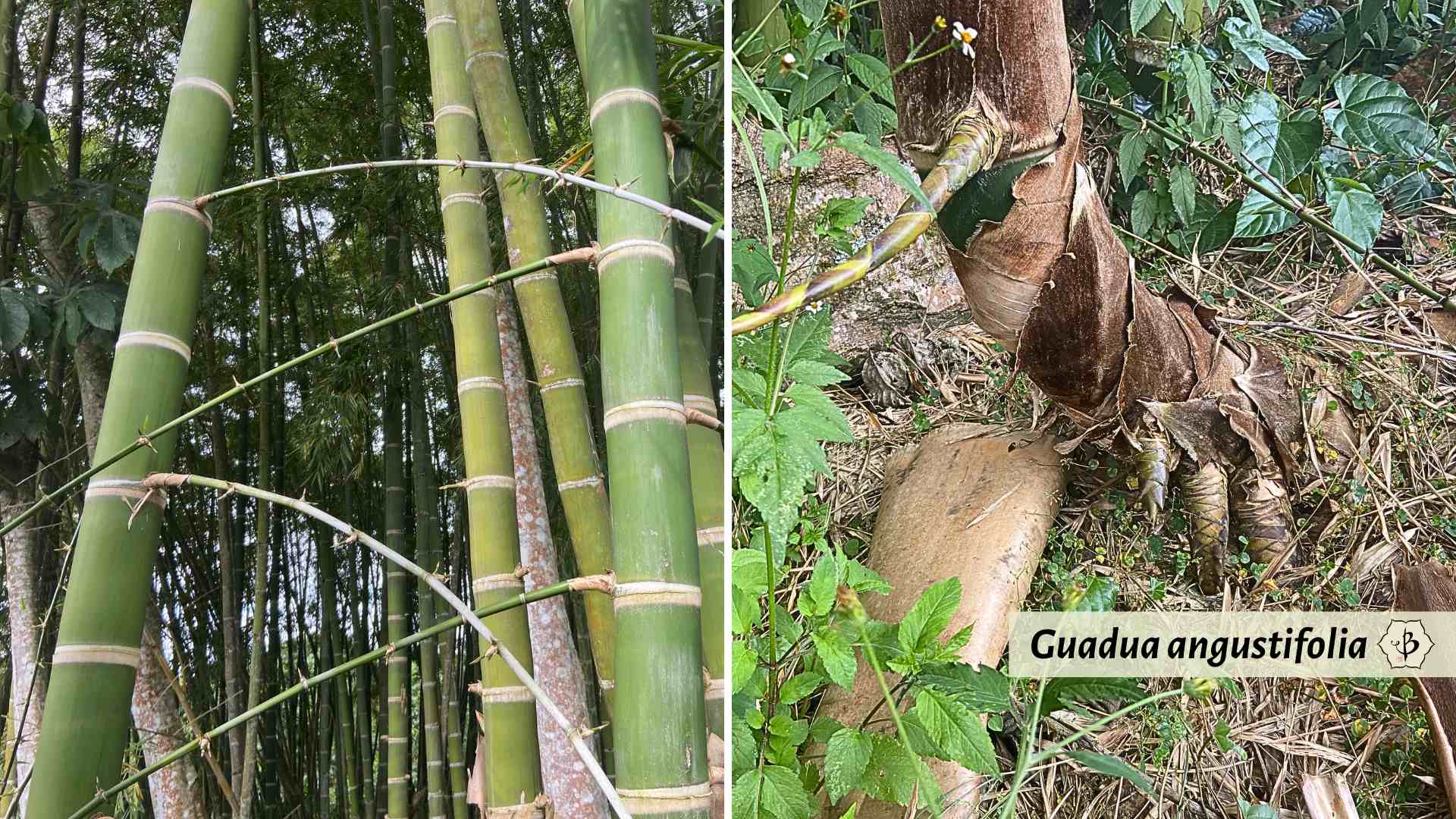Most of the bamboo in the world comes from Asia, particularly China, India, and Indonesia. But a brief tour through rural Colombia is enough to make you believe otherwise.
The equatorial highlands of Colombia are home to Guadua angustifolia, the most important bamboo species of the Western Hemisphere. This exceptional species is considered the hardest and one of the best bamboo varieties for building and construction. It’s sometimes called Iron Bamboo. In addition to its remarkable size and strength, Guadua is interesting for other characteristics including its open clumping growth habit and its pesky thorns.
Guadua can grow nearly 100 feet tall and up to about 5 or 6 inches in diameter. In order to thrive, it requires a tropical climate without frosts and without dramatic shifts between day and nighttime temperatures. This species flowers sporadically, rather than gregariously, without causing the plant to die afterwards.

Bamboo in Colombia
Guadua angustifolia is so ubiquitous in Colombia that “Guadua” is actually used as a synonym for bamboo. Especially happy at elevations between 1000-2000 meters above sea level, you can find giant patches of Guadua growing all across the landscape. Most often though, it is found growing in rifts where the water collects.
If you are looking for creeks and rivers, of which the mountains of Colombia have many, just follow the Guadua. Like all bamboo, Guadua won’t grow directly in the water, but it thrives in the moist soil along the waterways. Symbiotically, the robust rhizomes of Guadua do a fine job of holding the riverbeds together and preventing erosion on the steep slopes.
The Colombian government classifies Guadua as a tree and protects the majestic species from deforestation. Permits for commercial harvesting are required and difficult to obtain. This ensures that the presence of this stunning giant bamboo continues. But the policy also has the effect of stifling the bamboo industry in the country.

Guadua and its open-clumping habit
When classifying a species of bamboo, the first question is usually: running or clumping? Runners have monopodial rhizomes that stretch horizontally beneath the surface, growing ever outward and sporadically putting up new culms. The result is a thick grove of bamboo culms. Clumpers have sympodial rhizomes that curl up, with a U-shape, producing one new shoot or culm, usually right next to the other culms, creating a dense cluster of poles.
Guadua is a tropical species, technically referred to as a neo-tropical bamboo (from the New World, ie. America). Like all tropical bamboo, it has sympodial rhizomes. But unlike most clumpers, the rhizomes reach up to a meter or two before growing upward and forming culms. This growth habit makes a grove of Guadua look much more like a grove of running Moso than a tight clump of Bambusa or Dendrocalamus.

Harvesting Guadua
In Colombia, Guadua angustifolia enjoys a special status as a protected tree. Although bamboo is grass, which can renew itself quickly and easily, this species is especially useful as a building material. Farmers throughout the countryside rely on the hefty poles to construct sheds, fences, and light structures of all kinds. Those with more resources are able to build more impressive structures such as bridges, restaurants, and pavilions.

In order to collect these abundant poles for commercial purposes, however, one needs a special harvesting permit, which is not an easy thing to obtain. Still, there are a small handful of bamboo companies that legally export containers of top-quality Guadua culms to Europe and North America.
The loose-clumping nature of this bamboo variety makes the groves easier to manage than the more dense-clumping species. The sharp thorns, on the other hand, make Guadua somewhat challenging to work with.

Biodiversity with Guadua
Colombia boasts some of the most biodiverse landscapes in the world, and this is evident even in the midst of a robust Guadua grove. Orchids and bromeliads populate the ridges of older bamboo culms, and the air is teeming with birds, insects, and butterflies of all kinds.
Meanwhile, on the coffee farms that cover the majority of cultivated land in the country, we find all manner of intercropping, with plantains, yuca, corn, and tropical fruit trees. Most interesting to me, naturally, was the companion planting of coffee alongside native stands of giant iron bamboo.

Learn more
If you enjoy learning about bamboo species from around the world, you might also like to peruse some of these articles.

























